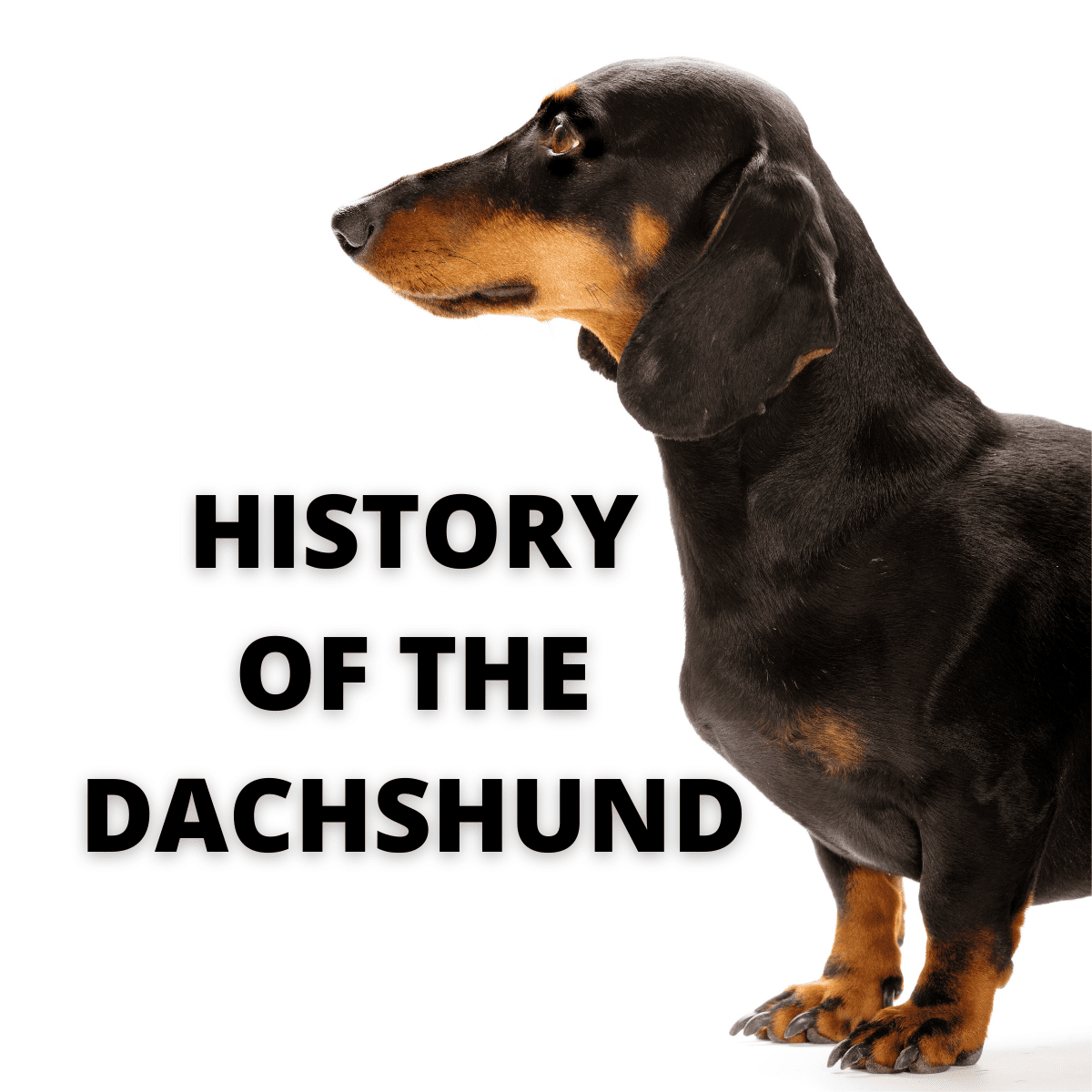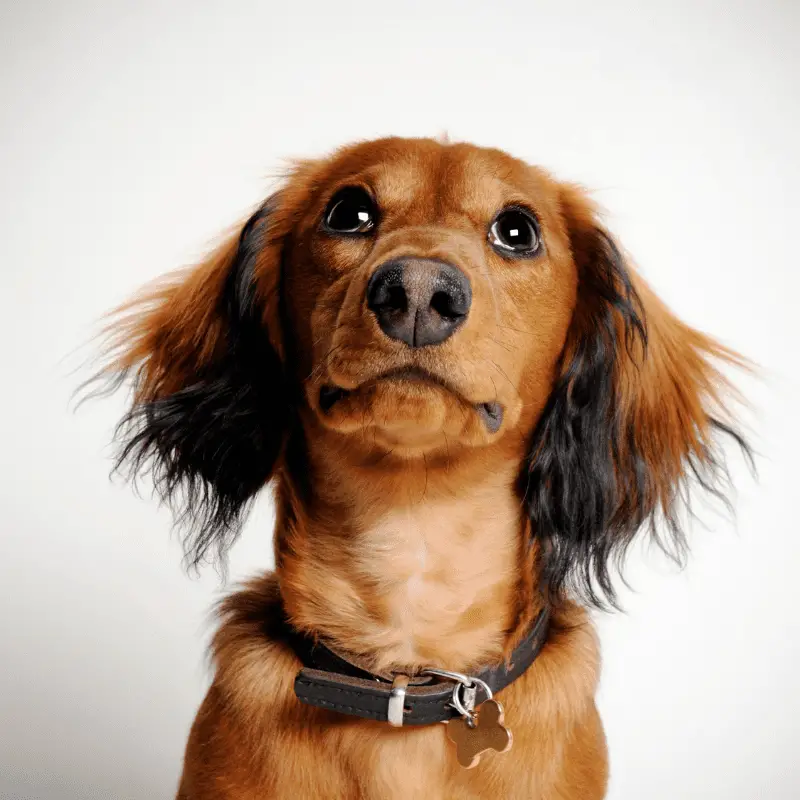Also known as the sausage dogs, badger dogs or wiener dogs, the Dachshunds are a loveable and energetic dog breed. The long-bodied, short-legged, hound type dogs are known for their endearing personality. Their unique size also helped the Dachshunds win the hearts of dog lovers across the world for years. The Dachshunds can be found in the miniature, as well as a standard size. However, the traits of these two types of dogs are incredibly similar.
The loveable and energetic nature of Dachshunds earned them a good reputation of being the perfect lapdog. Along with that, the Dachshunds can become a loving companion and an engaging family dog. Contrary to its size, the Dachshunds are generally very alert and protective. This trait makes the Dachshunds one of the best watchdogs across the world.
The standard-size Dachshunds are developed to chase, scent and flush out burrow dwelling animals like the badgers. The miniature Dachshunds, on the other hand, are bred to hunt small animals, like mice or rabbits. In the western side of the United States, the Dachshunds are used for tracking wounded deer and hunting prairie dogs.
The Dachshunds are also known for their ability to participate in the field trials, conformation shows and many other events that are organized by the purebred organizations, like the American Kennel Club (AKC). According to the number of registration of Dachshunds in the AKC, it took the 12th place in popularity in 2018.
Types of Dachshunds
- Standard
- Miniature
History of Dachshunds
The country of the Dachshund‘s origin can be traced back to old Europe. However, these long bodies dogs then had a unique appearance. It is the selective breeding technique of the Germans that changed the appearance of this dog breed significantly. Almost every royal curt of Europe those days had several Dachshunds. It is said that Queen Victoria was particularly fond of this dog breed.
15th Century
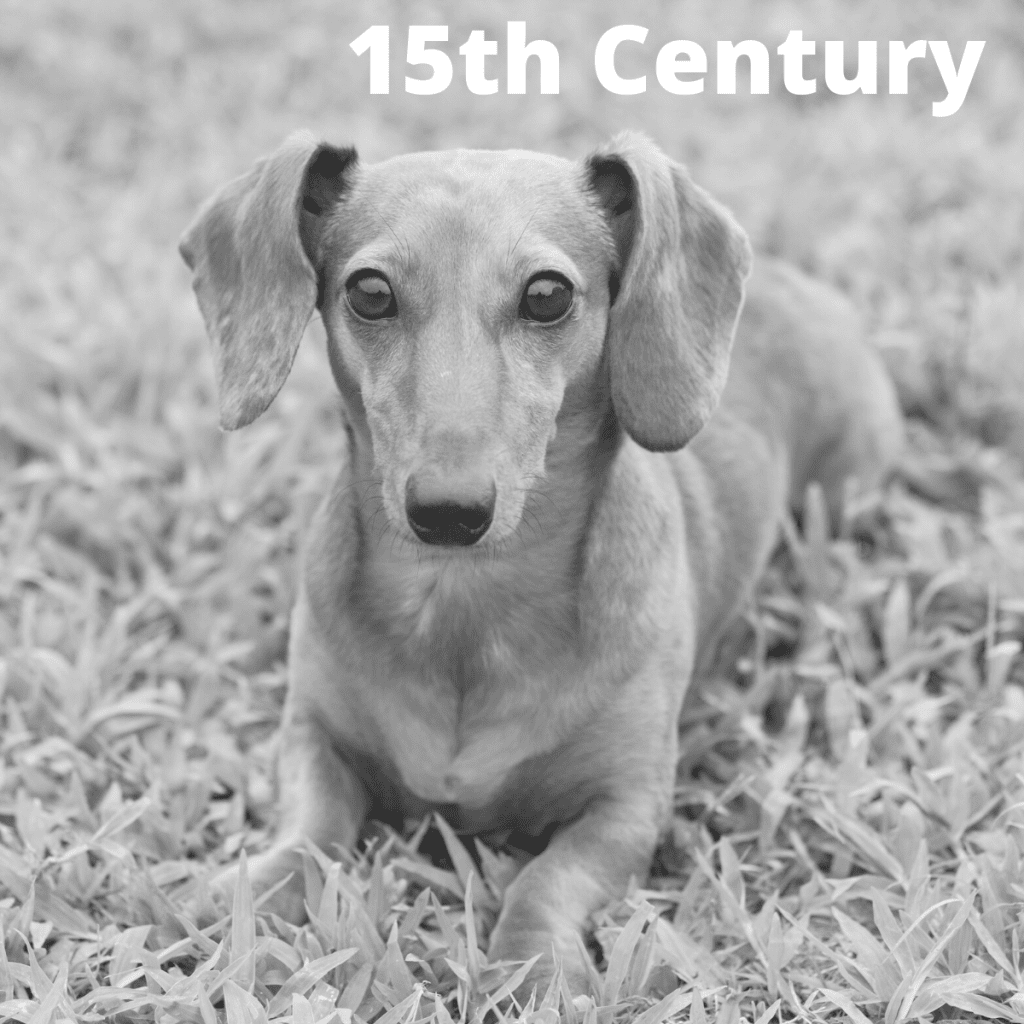
The predecessors of the Dachshunds can be traced back to the medieval period of Europe. In different portraits and photos, the Dachshunds are seen hunting badgers. Those dogs had elongated bodies, hound type ears, and short legs. At that time, the Dachshunds were generally used for hunting. The standard dogs were bred mainly for sniffing and flushing out different burrow dwelling mammals. The miniature versions of these dogs were bred primarily for hunting rabbits. These dogs also were used for hunting prairie dogs and tracking wounded deers.
16th Century

The Dachshund breed started to take shape when the Germans started selective breeding around this time. By the first half of the 16th century, Germans brought the Dachshunds to their country and started selective breeding that continued for over 100 years.
The Germans also gave the name of the breed. Once the Germans found out the hunting potential of these dogs, the naming became very easy. In German, ‘dachs’ meant badger, and ‘hund’ signifies dog. These two German words, when combined, offered the name, i.e. Dachshund or Badger dog.
It is the short legs of the dogs of this breed that allowed them to go after the small mammals and follow them into their burrow under the ground. During the selective breeding process, the Germans concentrated on improving the hunting ability of the dog breed. Over time, the paws and the legs of the dogs changed their shapes. The paddle-shaped paws helped the dogs with the ability to dig expertly. It, in turn, enabled them to follow the mammals that live in a burrow.
During this time, the appearance of the Dachshunds changed a lot. There are two different types of theories about the origin of the long-haired standard Dachshunds. One idea is that the standard long-haired Dachshunds were created by breeding the smooth-coated Dachshunds with other water and land spaniels. The wire-haired Dachshunds were the last one to be made. It is believed that the dogs originated as a cross between different wire coated Pinschers and Terriers and the smooth Dachshunds.
The curved tail and the flapped down ear had been deliberately bred into the dog as they helped the Dachshunds in hunting. The flapped ear kept dirt, grass seeds, insects etc. out of the ear canal of the dog while they followed the mammals into their burrows. The curved tail has a dual purpose. It helped the owners of the dog to find their pets easily in a long grassland. It also allowed the owners to rescue the dogs if they get stuck inside the burrow.
The smooth-haired Dachshunds are probably the oldest type. It might be produced by cross-breeding between a Pinscher, a Bracke, and a German Shepherd Pointer. Others believe that this breed was created through cross-breeding between the pinscher and a short Bruno Jura Hound. Based on the scent ability of the dogs, yet another fraction of the Dachshunds fans believe that the dogs are the descendants of the Basset Hounds.
18th Century

The first verifiable reference of Dachshunds was found in the 18th century. The names Dachs Krieger (badger warrior), or Daschs Kriecher ( badger crawler) were mentioned in the books written during that time. Even though there were some references to the hole dogs or badger dogs in the books that were published before this time, the name of the dog was never mentioned. The authors only described the purpose of the dogs in those pieces of literature rather than indicating the specific breed. The original Dachshunds were divided into two different varieties, the straight-legged dogs and the crook-legged dogs. It is the second variety that is the forefathers of modern Dachshunds.
Recommended reading
It is during this time that the Dachshunds were first brought to Great Britain as well as the United States. The dog breeders of these countries started to breed the Dachshunds as a pet instead of the hunters. The weight of the Dachshunds also started changing. Compared to other species, the Dachshunds of the US and Great Britain weighed about 10 pounds lighter.
The American Kennel Club recognized this dog in 1885. In the same year, the Dachshund Club of America was found.
There is a belief that the double Dapple Dachshunds were bred during this time. These dogs were prone to hearing issues, blindness, and other eye diseases.
1913-1919
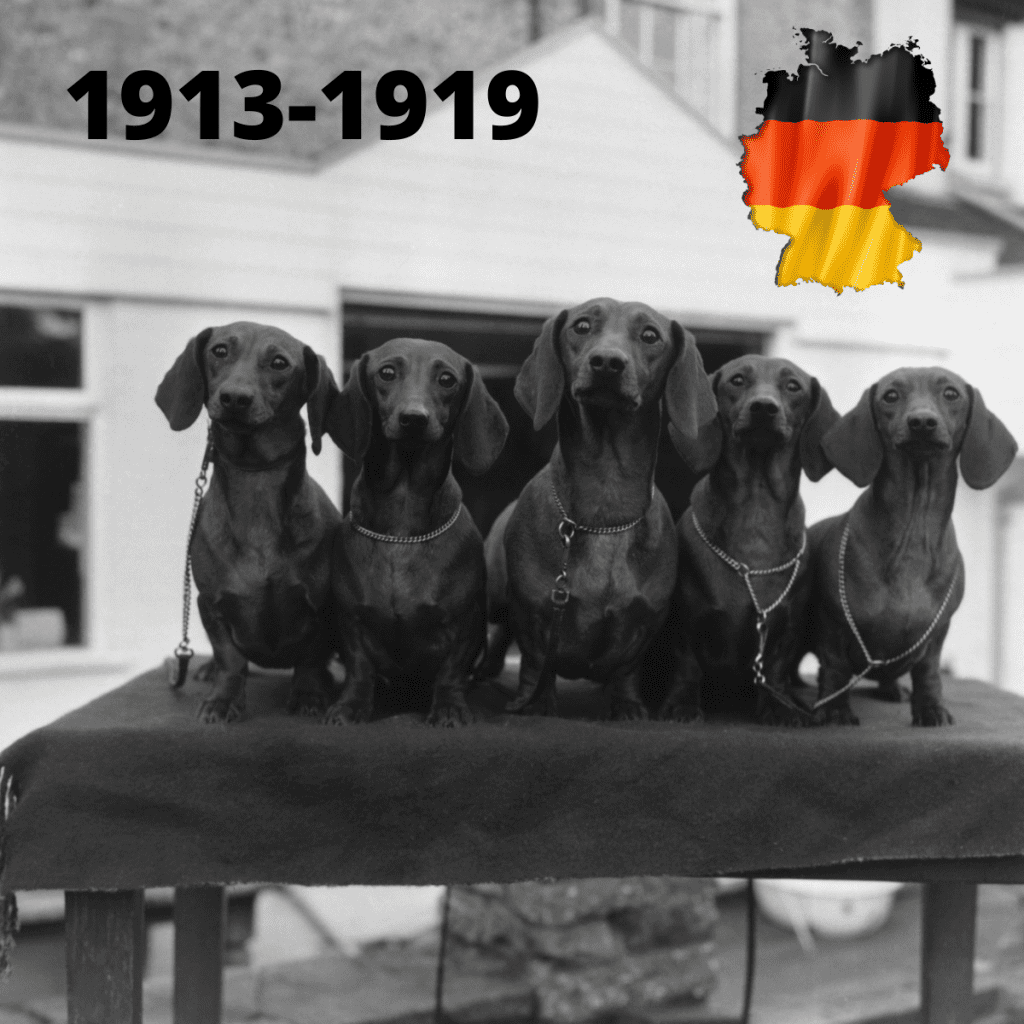
Dachshund dogs have an adventurous and bloody history. These dogs suffered greatly during the First World War due to their origin. While in 1913 the Dachshunds were one of the most popular dogs, during the First World War, the dog breed went through a rough genocide.
Once The US government declared war on Germans in 1917, everything German became enemy of the Americans. The Dachshunds were given the name of liberty dogs, but that did not help the issue. The owners of these dogs were attacked on the streets, and the mob often killed the dogs.
For instance, one of the kennel clubs situated in Chicago had to kill all of the Dachshunds to avoid public aggression. The media, as well as the government, supported these mass killings of the Dachshunds during that time. The popularity of the Dachshunds not only took a hit in the US but also different European countries. While 217 Dachshunds were registered in Great Britain in 1917, there were none left in 1919.
1939-1945
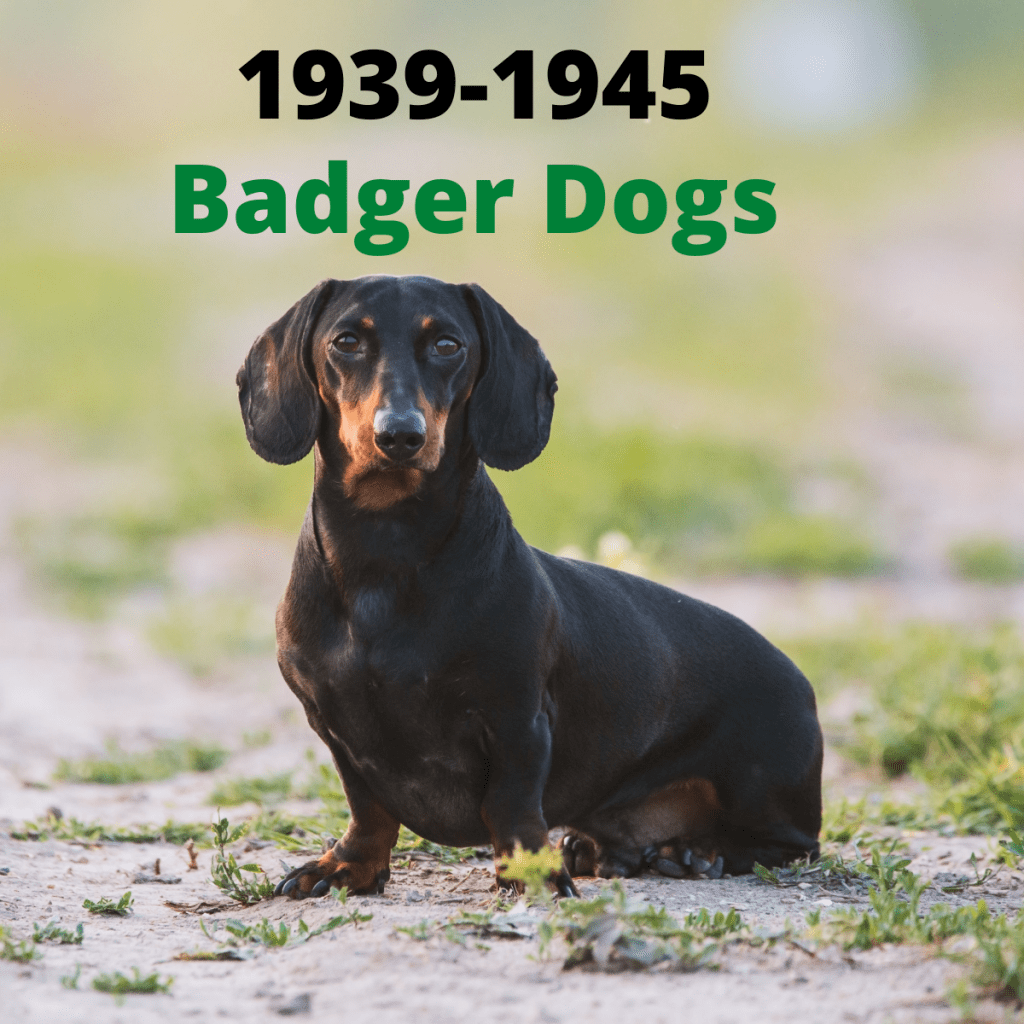
During the Second World War, the same thing got repeated. During this time, the Dachshunds were used in the US, France and England for depicting different wartime propaganda pieces. However, the violence was of a lesser extent compared to the First World War. To protect the Dachshunds from facing a similar type of violence toward them, they were called badger dogs during the Second World War. However, once the war was over, the popularity of these dogs soared once again.
1970
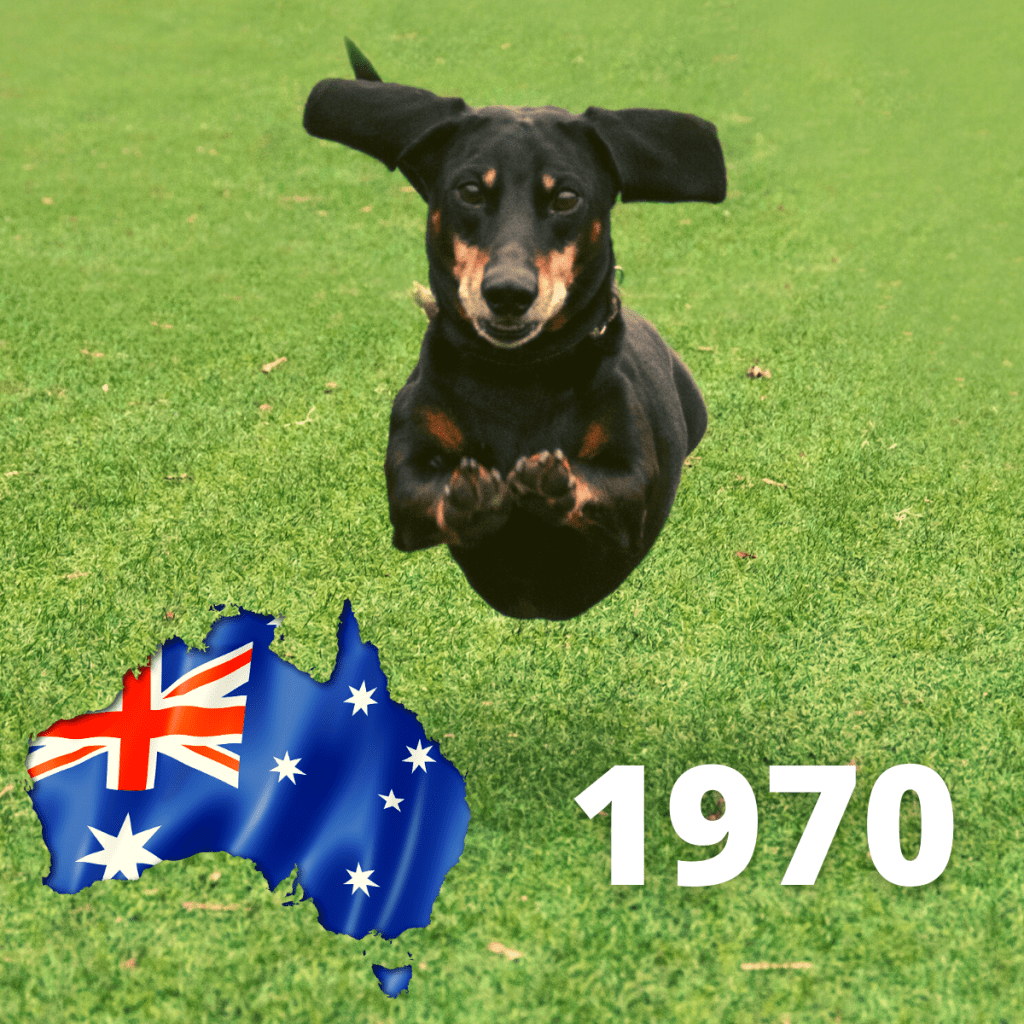
Dog racing and Dachshunds have become very common during this time. Even though this trend started during the 1970s in Australia, it is still relevant. Even though many kennel clubs are dead against this tradition, many such dog races always get arranged in North America for different fundraisers.
1972

The Dachshunds became the first official mascot at the 1972 summer Olympics in Munich. Wadi, the Dachshund, represented the three main qualities that the athletes required; tenacity, resistance and agility. Even the marathon route of the Olympics resembled the shape of the Dachshund.
2014
In this year, the first cloned Dachshund dog Minnie Winnie was born in England. The name of the cloned dog was given after Winnie, the 12-year-old dog that was cloned. Minnie Winnie was born in a test tube lab situated at Sooam Biotech in Seoul, South Korea. The cost of the cloning was about 60,000 Euro. Winnie is considered the first British dog that had been cloned ever.
Conclusion
Today, there is no doubt that the Dachshunds are one of the most popular dog breeds of the country. In 2018, the breed came 12th in the most popular dogs in the USA list of AKC. Dachshunds also live a reasonably long life. They are the Guinness world record holder of the title of the oldest dog in the world. The loveable, peppy and playful Dachshunds are genuinely the best pet for every home.

